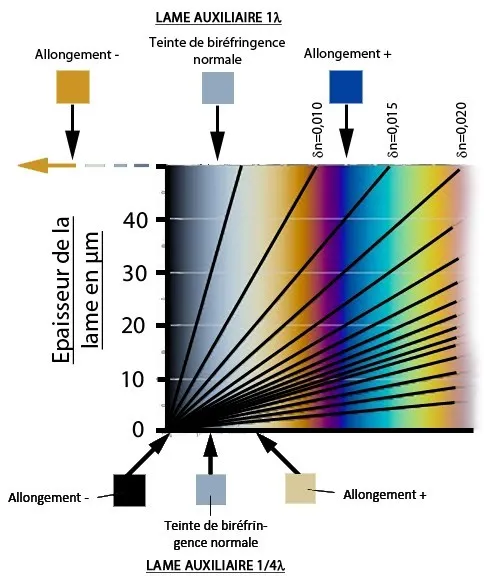What is elongation under microscopy ?
Elongation : definition
We say that a section has a positive elongation when the extinction direction parallel to this elongation is Ng, and that it has a negative elongation when this direction is Np. For minerals with oblique extinction in relation to their elongation, we extend this definition by considering only the direction of extinction which makes an angle less than 45° with the elongation of the section.
In practice, this criterion is determined using a polarizing microscope by means of auxiliary plates (1/4 wavelength or 1 wavelength λ). When the elongation of the crystal is perpendicular to the auxiliary plate therefore parallel to Ng (noted γ on the pictures), if the polarization tint increases the elongation is positive whereas if it goes down the elongation is negative.
Signs of elongation are a powerful tool in determining certain minerals such as serpentines or microcrystalline varieties of silica (lussatite, chalcedony, etc...) difficult to identify even with microprobe or X-ray diffraction analyzes.
b - Positive elongation of fibers in analyzed polarized light (width 3 mm), ¼ λ.
c - Positive elongation of fibers in analyzed polarized light (width 3 mm), 1 λ.
On pictures b and c it is clearly noted that the lussatite fibers parallel to γ see their polarization tints increase.


